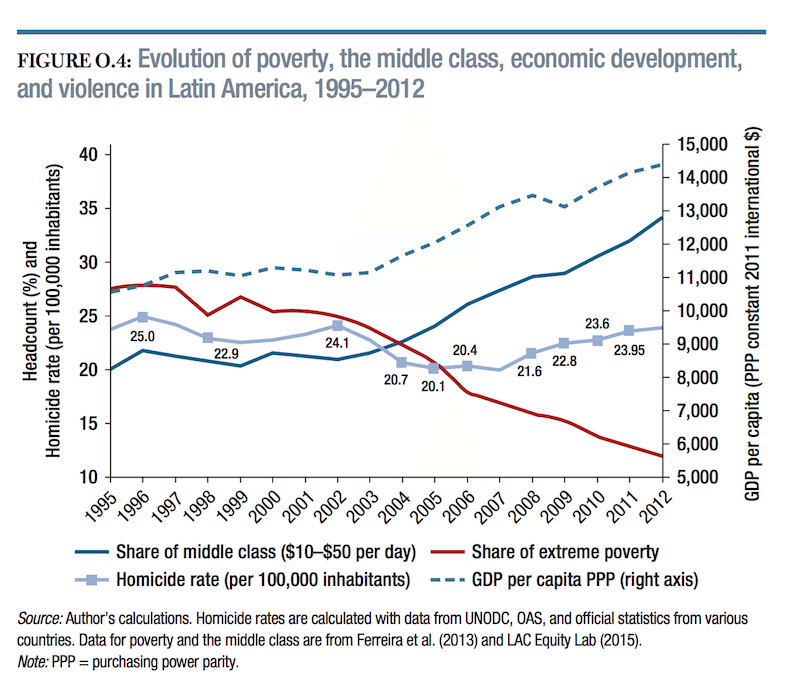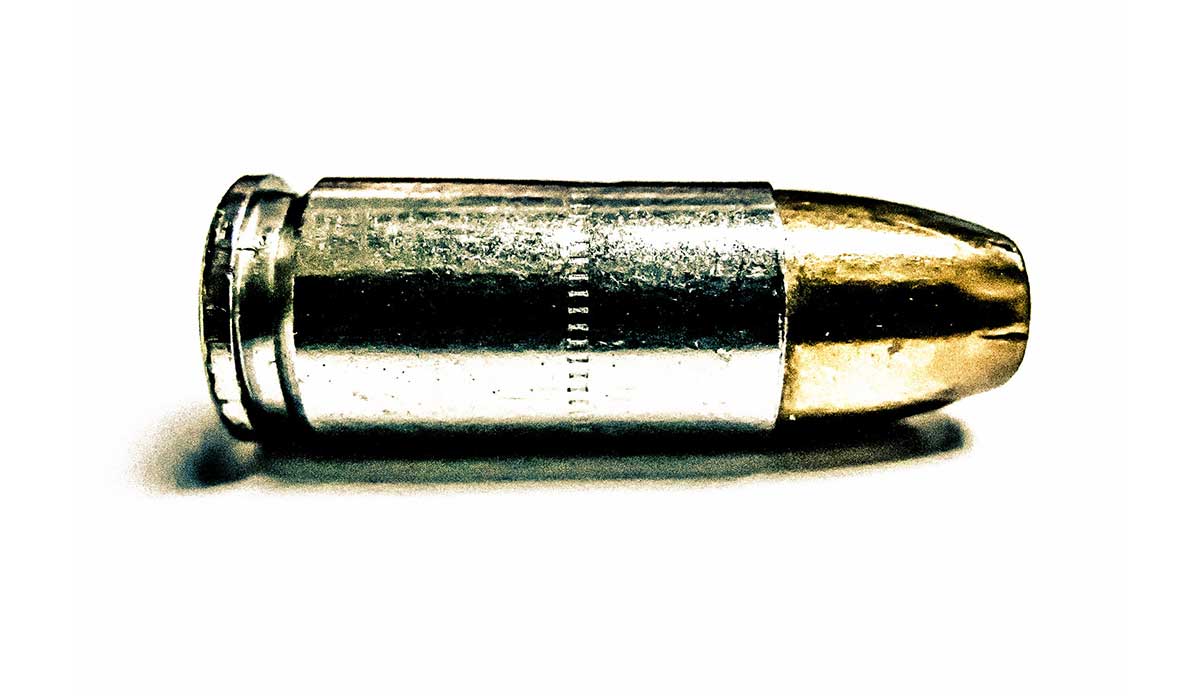Eight of the world’s 10 most violent nations, as defined by the number of intentional homicides per 100,000 people, are in Latin America and the Caribbean (LAC). While LAC countries account for only 8% of the world’s population, 37% of the world’s homicides occur here. With an average of nearly 24 homicides per 100,000 people, LAC is considered the world’s most violent region.
In a 2016 World Bank report titled “Stop the Violence in Latin America,” author Laura Chioda examines why these numbers are so high. She cites drug trafficking, organized crime, weak judicial and law enforcement systems, and “a lack of opportunities and support for young people who live in deprived communities.” Her study offers promising policy recommendations for crime and violence prevention that urge policymakers to consider the complexities of the data they are given.
For one, she points out that GDP in the entire region has been rising. Poverty and income inequality are both improving substantially. Yet violence still persists, challenging the notion that better economic outcomes inherently improve security. “Development has a dark side,” she writes. “What benefits the formal economy may also benefit illegal markets.”

Region-wide or country-wide statistics also tend to hide the geographical reality that certain communities, neighborhoods, and sometimes individual streets experience the majority of homicides. Because each violent hub has its own underlying cause for violence, policies need to be more localized.
Adolescents are at the greatest risk for homicides and victimization. Chioda reports, “The homicide rate for younger teens ages 10–14 is around 2.8 (per 100,000) and increases more than ten-fold (to 31.1 per 100,000 in 2008) for older teens ages 15–19. The risk of homicide victimization peaks at 48.2 per 100,000 for those ages 20–24.” These numbers are consistent with what is known as “the age-crime curve,” in which criminal behavior increases through adolescence and peaks in early adulthood.
On an individual level, adolescence is a biologically and socially sensitive time period. Brain development, environment, and relationships shape the trajectory of a young persons’ life. As Chioda emphasizes, children and young adults are easily influenced by promises of wealth and vulnerable to manipulation, especially when legal forms of employment are less readily available.
To stem the violence in Latin America and the Caribbean, Chioda argues that prevention is crucial. In Panama, for instance, investments in community programs targeted toward at-risk youth has curbed a spike in homicide rates. From 2010 to 2011, counseling in schools, sports facilities, parks, peer mentoring, and educational and job training opportunities nearly halved crime rates within one year. The United States Agency for International Development has also recommended that policy-makers “make community-based violence prevention programs a frontline weapon in reducing crime and violence.”
Ultimately, policies and research that target early intervention and the provision of meaningful opportunities for youth at the neighborhood level may well be the most cost-effective and impactful.
Feature image: John Spade, “Dodged” A Bullet, used under CC BY 2.0













